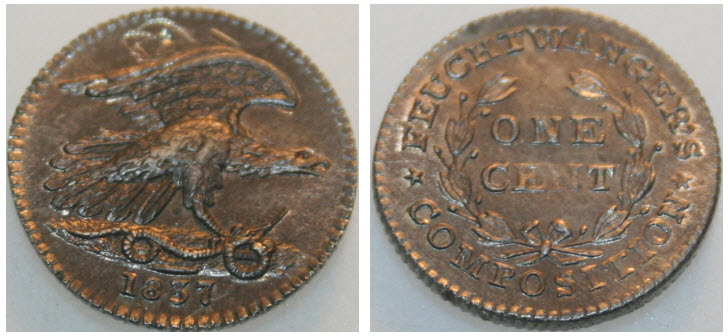The 1837 Feuchtwanger Cent
Posted by Tom Deaux on Apr 1st 2020
Lewis Feuchtwanger
The designer of the Feuchtwanger Cent, Lewis Feuchtwanger, received his PhD in Germany in 1827. He emigrated to New York City in 1829 and lived there until his death in 1876. He became interested in solving the problem that the US Large Cent was costly to produce. He proposed reducing the cost by using Nickel instead of Copper and by reducing the size of the coin.
In the early 1800’s Copper was expensive, and the Large Cent was mainly Copper. Dr Feuchtwanger created a less expensive alloy of copper, nickel, zinc, and tin, now called “German Silver”. He wanted to reduce the size of the Large Cent, which was about the size of today’s quarter. He proposed changing it to about the size of the modern Lincoln Cent. The smaller cent would weigh about 1/3 of the Large Cent.
Dr Feuchtwanger’s One Cent Pattern Coin
Dr. Feuchtwanger minted a One Cent Pattern coin, now called the Feuchtwanger Cent. It is made of the “German Silver” alloy. The obverse design has an eagle with a serpent in its talons.

He made over a million of these “tokens” from 1837 to 1844. His cents were in circulation for decades.
Ahead of its Time?
The Feuchtwanger Cent is not a US Mint issue. The US Mint rejected the proposal to create Feuchtwanger Cents, so he minted the coins privately. Modern collectors tend to collect them in the context of a “Hard Times Token” (HT-268), or as part of a “Large Cent” collection.
The “German Silver” alloy was not used by the US Mint, but the mint did start using Copper/Nickel in new coins in the 1860’s. The size of the new “Small Cent” created in 1856 was the same as that of the Feuchtwanger Cent.
